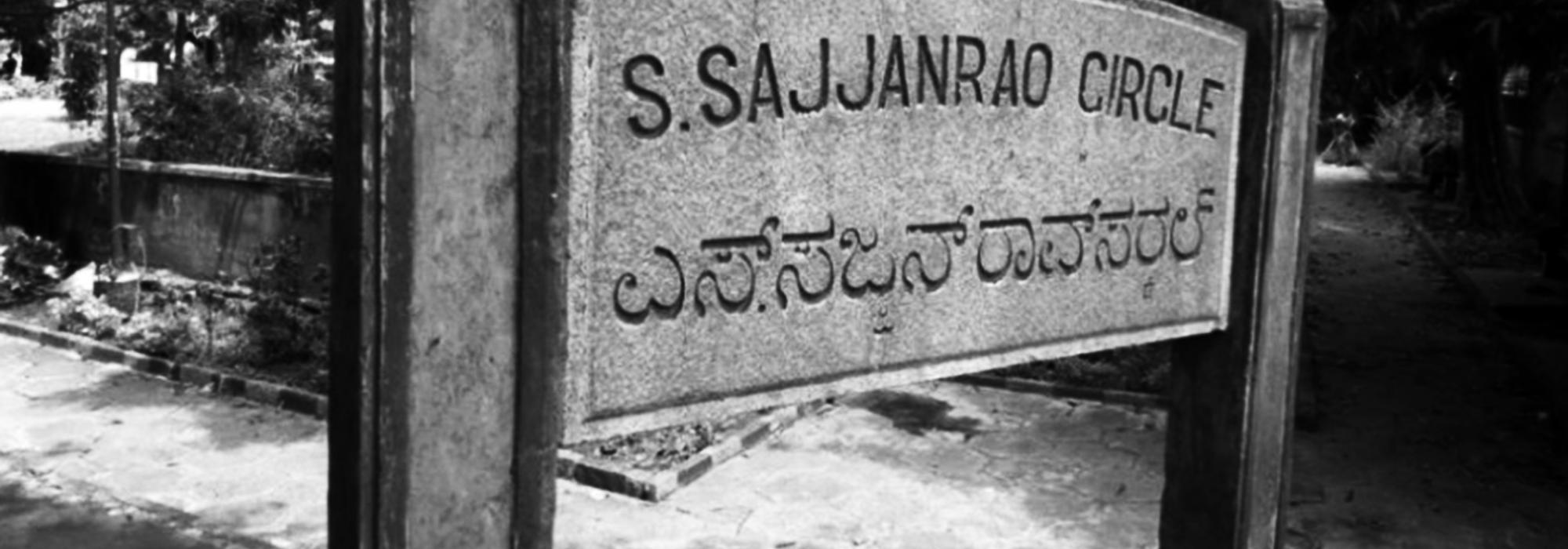Gratification
On the day the gopura work was completed, the kalaśa was established, and the samprokṣaṇā was done, one should have seen Sajjan Rao. He was the epitome of gratification; a man in supreme bliss. An essential part of human life is that bliss. One has to live for such pure joy. Fortunate are those that experience such joy.
~
Sajjan Rao graced my house one day afternoon at around three. I received him and after he sat down, I asked him, “What’s this rāyare – you’ve come in this sunshine? It is so hot!”
Sajjan Rao said, “Let the sunshine be, it can be borne somehow. There is turmoil in my mind. Its heat is intense. I felt like seeking your suggestion. So here I am.”
I asked, “What sort of turmoil, rāyare? The temple work is going on well, is it not?”
“Swami, will our Hindu religion survive?”
“What are you saying? If you had asked this question two years back, arrangements could have been made to save you two lakh rupees!”
“How so?” he asked.
I said, “Construction of temple and choultry could have been stopped then!”
“Swami, don’t make fun. My mind is tense.”
“Rāyare, why do you fear? Hindu religion is eternal. It can never get sullied.”
“Swami, some people say – ‘Why did you put money into that temple? You could have done some other social good with it. A school, a hospital, a veterinary hospital, or a students’ hostel would have been better!’ This hurts my mind a little.”
I then said, “Schools and hostels are all fine. No one says they are bad. But the fundamental for all that is the Supreme. If there is belief in the Supreme, from that belief is born dharma. If there is no god, why does one need dharma or morals? Our life rests on the support of the faith we have in the Supreme. And that Supreme is not something we can see. It’s not something we can hold in our hands. So we need some symbol or sign to meditate on the Supreme. We imagine god in our mind through that symbol. The temple is that symbol. Therefore, there is a need for temples as long as man needs the Supreme. The temple itself is not god. But god is realised by means of the temple. This is the commoners’ path.”
Permanence
“Even among Muslims and Christians, this statement is true. If you give up god, what life support do humans have? Land, house, money in the bank, gold – how long can a man live on these? Children, wife, friends, relatives – how long will these last? Isn’t the Supreme the only permanent thing? No matter how strong a person is or how intelligent, will not his power and wealth perish one day? Then he will have to realise his helplessness and place his trust in the Supreme. Such people of Bangalore and surrounding areas will come to Vishveshwarapuram and surrender to Subramanyaswami. You have done work that will give courage and hope to thousands of people for thousands of years. This is permanent dharma!”
Sajjan Rao listened to me intently. He said it gave him mental courage and left.
Humility
Let me recount an incident that conveys Sajjan Rao’s nature.
Another afternoon, he came to my house. That is usually my coffee time. I was extremely pleased he came home at that time. My sister gave him home-made uppiṭṭu in a plate and coffee in a mug to him, just as she did for me. We were conversing about various things while eating. I then remembered something. Rao loved tāmbūla (paan). After every meal, he would take some buttermilk followed by tāmbūla. But I don’t take tāmbūla. I went from the sitting room into the house to instruct my sister to ready the tāmbūla. When I returned to the room after giving instructions about the tāmbūla, Rao had moved from the room to the hall and was looking for something behind the door. I asked him, “What rāyare, what do you want?”
Signalling with his hands, he whispered, “A small broom!”
I was perplexed. I said “Why?”
“Swami, this is a brāhmaṇa home. While eating uppiṭṭu, a couple of grains might have dropped to the floor. If I can get a broom, I shall myself sweep it and wipe it clean.”
Readers may imagine my surprise. A man who was a millionaire and eminently virtuous, who could employ hundreds like me under him – is this for real?
Internal Beauty
Seeing me surprised, this is what Sajjan Rao said:
“This is no big deal. To me this is routine. I first worked in my maternal uncle Bhojagade Venkata Rao’s shop. As soon as it struck eight in the evening, the shutters were to be brought down, carpets and pillows to be dusted, the inner area to be swept such that there was not a speck of dust, and then the shop doors shut. As soon as the doors were opened next morning, everything had to be spick-and-span. I’m used to it since then. Is it difficult for me to take out the mailige that I have caused in a brāhmaṇa’shouse? It’s alright sir.”
This matter needs no explanation, right?
Sajjan Rao was friendly and generous. More importantly, he was a humble man.
Sajjan Rao need not be among the ranks of the learned. But he is at the top among the echelons of cultured people. Culture is higher than learning. Learning means bookish knowledge. Culture is life’s internal beauty.
Concluded.
This is the second part of the translation of the fifth essay in D V Gundappa’s magnum-opus Jnapakachitrashaale (Volume 7) – Hrudaya Sampannaru. Edited by Hari Ravikumar.












































